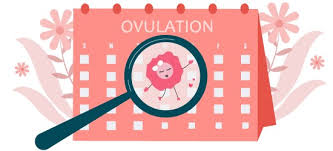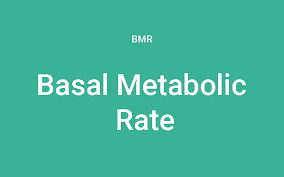Discover the power of personalized fertility tracking with My Ovulation Calculator, an innovative and user-friendly tool designed to help you predict your fertile window and boost your chances of conceiving. With the convenience of an online ovulation calculator, you can easily access and monitor your unique fertility patterns from the comfort of your home or on the go, making your journey to parenthood more informed and efficient.
Ovulation Calculator
[ez-toc]
Ovulation and Conception
Ovulation and conception are two pivotal events in a woman’s reproductive life. Understanding these processes can help you make informed decisions about your fertility journey. In this ultimate guide, we’ll explore the science behind ovulation, the role it plays in conception, and offer practical tips to help you maximize your chances of conceiving naturally.
What is Ovulation?
Ovulation is the process during which a mature egg is released from a woman’s ovary, typically occurring once every menstrual cycle. This event is crucial for conception, as the egg needs to be fertilized by sperm to create a viable embryo. Ovulation is regulated by hormones and usually takes place around the midpoint of a woman’s menstrual cycle.
The Fertile Window
The fertile window is the period during which conception is most likely to occur. This window typically lasts for six days, ending on the day of ovulation. The most fertile days are the three days leading up to ovulation, as sperm can survive in the female reproductive tract for up to five days, while the egg remains viable for only 12-24 hours after being released.
Improving Your Chances of Conception
A. Maintain a Healthy Lifestyle: Eating a balanced diet, exercising regularly, and managing stress can all have a positive impact on your fertility.
B. Time Intercourse: Aim to have intercourse during your fertile window to increase your chances of conception.
C. Understand Your Cycle: Tracking your menstrual cycle and understanding your unique fertility pattern can help you identify the optimal time for conception.
D. Consult a Fertility Specialist: If you’re struggling to conceive after a year of trying, it’s worth considering seeking professional help from a fertility specialist.
Ovulation Disorders and Infertility
Certain ovulation disorders can hinder conception, such as:
A. Polycystic Ovary Syndrome (PCOS): This condition is characterized by hormonal imbalances and irregular ovulation, making it difficult to conceive.
B. Hypothalamic Dysfunction: Factors like stress, weight fluctuations, or excessive exercise can disrupt the hormonal balance necessary for ovulation.
C. Premature Ovarian Failure (POF): This occurs when a woman’s ovaries stop functioning before the age of 40, leading to premature menopause and infertility.
Understanding ovulation and conception is essential for any woman planning to start a family. By tracking your ovulation, identifying your fertile window, and maintaining a healthy lifestyle, you can increase your chances of conceiving naturally. Remember, it’s always best to consult a healthcare professional if you have concerns about your fertility or are struggling to conceive.
Ovulation Prediction
Ovulation prediction plays a crucial role in planning for conception, as it helps couples determine the best time to try for a baby. By accurately pinpointing your fertile window, you can significantly improve your chances of getting pregnant. In this ultimate guide, we’ll explore various ovulation prediction methods and provide practical tips to help you identify the optimal time for conception.
The Importance of Ovulation Prediction
Ovulation is the process by which a mature egg is released from the ovary, making it available for fertilization by sperm. Accurately predicting ovulation allows you to identify your fertile window, the period when the chances of conception are highest. This window typically lasts for six days, ending on the day of ovulation.
Ovulation Prediction Methods – How to Track Your Ovulation
There are several methods to predict ovulation, each with its own advantages and limitations:
A. Basal Body Temperature (BBT): Monitoring your basal body temperature daily can help you identify the slight increase that occurs after ovulation. This method requires consistency and diligence, as it involves taking your temperature first thing in the morning before any activity.
B. Ovulation Predictor Kits (OPKs): These kits test your urine for the presence of luteinizing hormone (LH), which surges just before ovulation. OPKs are easy to use and offer a high degree of accuracy.
C. Cervical Mucus: Observing changes in your cervical mucus can provide valuable information about your fertility status. As ovulation approaches, the mucus becomes more slippery and stretchy, resembling raw egg whites.
D. Fertility Apps: Many fertility apps use data from your menstrual cycle, BBT, and other inputs to predict ovulation. While convenient, their accuracy depends on the quality of the data provided and the algorithm used.
Tips for Accurate Ovulation Prediction / Tracking
A. Be Consistent: Regardless of the method you choose, consistency is key. Track your cycle daily, and make sure to follow the instructions of your chosen method carefully.
B. Combine Methods: Combining two or more ovulation prediction methods can increase your chances of accurately identifying your fertile window.
C. Understand Your Cycle: Familiarize yourself with the typical signs and symptoms of ovulation, as this can help you recognize when your fertile window is approaching.
When to Seek Professional Help
If you’ve been trying to conceive for over a year without success, or if you have concerns about your fertility, it’s a good idea to consult a healthcare professional. A fertility specialist can help identify potential issues and recommend appropriate treatments or interventions.
Ovulation prediction is an essential tool for couples trying to conceive. By understanding the different methods available and implementing them consistently, you can improve your chances of conceiving naturally. Remember to be patient, as it may take some time to familiarize yourself with your body’s unique fertility pattern. If you’re struggling to conceive or have concerns about your fertility, don’t hesitate to seek professional help.
When am I ovulating? – Sign of Ovulation
Determining when you’re ovulating is essential for couples trying to conceive, as it allows you to identify the optimal time for conception. In this ultimate guide, we’ll explore the various signs of ovulation, offer practical tips on how to monitor your body’s signals, and help you confidently answer the question, “When am I ovulating?”
Understanding Ovulation
Ovulation is the process by which a mature egg is released from the ovary, making it available for fertilization by sperm. Ovulation typically occurs around the midpoint of a woman’s menstrual cycle and is regulated by hormones.
Signs of Ovulation
There are several signs that can indicate ovulation is approaching or has occurred:
A. Basal Body Temperature (BBT): A slight increase in your basal body temperature (about 0.5 to 1.0°F) may indicate ovulation has occurred.
B. Cervical Mucus: As ovulation approaches, cervical mucus becomes more slippery and stretchy, resembling raw egg whites.
C. Mild Abdominal Pain: Some women experience a mild twinge or cramping sensation, known as mittelschmerz, around the time of ovulation.
D. Increased Libido: Some women notice an increase in sexual desire during their fertile window.
E. Breast Tenderness: Hormonal changes during ovulation can cause some women to experience breast tenderness.
When to Seek Professional Help
If you’re struggling to conceive after a year of trying or have concerns about your fertility, consider consulting a healthcare professional. A fertility specialist can help identify potential issues and recommend appropriate treatments or interventions.
My ovulation test shows a faint line ?
When using an ovulation predictor kit (OPK) to track your fertility, interpreting the results accurately is crucial to understanding your body’s ovulation pattern. A common question that arises is, “My ovulation test shows a faint line, what does this mean?” In this guide, we’ll explain the significance of a faint line on an OPK, offer tips for accurate testing, and help you make the most of your ovulation test results.
How Ovulation Predictor Kits Work
OPKs are designed to detect the surge in luteinizing hormone (LH) that occurs just before ovulation. They work similarly to pregnancy tests, using lines or digital displays to indicate the presence of LH in your urine.
Interpreting Faint Lines on an OPK
A faint line on an ovulation test may have different meanings depending on the type of OPK you’re using:
A. For Standard OPKs: A faint line typically indicates a low level of LH, which is common throughout your menstrual cycle. It does not necessarily mean you’re about to ovulate. A positive result occurs when the test line is as dark or darker than the control line, indicating an LH surge.
B. For Digital OPKs: These tests typically display a symbol or message instead of lines, making interpretation more straightforward. A faint line on a digital test strip is usually irrelevant, as the digital reader is designed to interpret the results for you.
Tips for Accurate Ovulation Testing
A. Test at the Right Time: The best time to test for an LH surge is usually in the late morning or early afternoon. Avoid testing first thing in the morning, as LH levels may not be concentrated enough to detect.
B. Follow Instructions: Ensure that you carefully read and follow the instructions provided with your OPK for the most accurate results.
C. Test Daily: Test daily during your expected fertile window to increase the likelihood of catching your LH surge.
D. Stay Consistent: Use the same brand of OPK and test at roughly the same time each day to ensure consistent results.
When to Seek Professional Help
If you’re struggling to conceive after a year of trying or have concerns about your fertility, consider consulting a healthcare professional. A fertility specialist can help identify potential issues and recommend appropriate treatments or interventions.
A faint line on an ovulation test is a common occurrence and typically indicates a low level of LH. To accurately track your ovulation and identify your LH surge, follow the testing tips provided and consider using a digital OPK for clearer results. Remember, consistency is key when using ovulation tests, and seeking professional help is always an option if you’re struggling to conceive or have concerns about your fertility.
Online Ovulation test and Kit
In today’s digital age, online ovulation tests and kits have revolutionized the way women track their fertility. These tools provide an easy and convenient way to monitor your cycle and predict your fertile window. In this comprehensive guide, we’ll dive into the world of online ovulation tests and kits, explain their benefits, and offer tips for choosing the right digital fertility tracking tool for you.
Types of Online Ovulation Tests and Kits
Online ovulation tests and kits can be categorized into the following types:
A. Digital Ovulation Predictor Kits (OPKs): These kits include a digital reader and test strips that detect the luteinizing hormone (LH) surge, which precedes ovulation. The digital reader interprets the test strip results and provides a clear indication of your fertility status.
B. Fertility Apps: These smartphone applications use data from your menstrual cycle, basal body temperature (BBT), and other factors to predict your ovulation and fertile window.
C. Wearable Fertility Trackers: Wearable devices like fertility bracelets or watches can monitor physiological parameters such as BBT, heart rate, and sleep patterns to help predict ovulation.
Benefits of Online Ovulation Tests and Kits
A. Convenience: Online ovulation tests and kits allow you to track your fertility from the comfort of your own home or on the go.
B. Accuracy: Digital ovulation tests and fertility trackers often provide more accurate and consistent results compared to traditional methods like charting BBT or monitoring cervical mucus.
C. Customization: Many digital fertility tracking tools offer personalized insights and recommendations based on your unique fertility pattern and cycle data.
D. Data Storage: Online fertility trackers store your data in the cloud or on your device, making it easy to review past cycles and monitor trends.
Tips for Choosing the Right Online Ovulation Test or Kit
A. Consider Your Needs: Choose a digital fertility tracking tool that aligns with your lifestyle and preferences. If you want a simple, straightforward method, a digital OPK may be the best option. If you prefer comprehensive cycle tracking, a fertility app or wearable device might be more suitable.
B. Research Features and Accuracy: Evaluate the features and accuracy of different online ovulation tests and kits. Look for user reviews and clinical studies to assess their effectiveness.
C. Evaluate Cost and Subscription Plans: Digital fertility tracking tools can vary in price. Consider the initial cost of the device or kit, as well as any ongoing subscription fees, when making your decision.
When to Seek Professional Help
If you’re struggling to conceive after a year of trying or have concerns about your fertility, consider consulting a healthcare professional. A fertility specialist can help identify potential issues and recommend appropriate treatments or interventions.
Ovulation Calculator
Features of Ovulation Calculator:-
A. Personalized Fertility Insights: My Ovulation Calculator uses your unique cycle data to provide tailored fertility predictions and recommendations.
B. Fertile Window Prediction: The calculator estimates the days in your menstrual cycle when you’re most likely to conceive, helping you time intercourse for optimal chances of pregnancy.
C. Menstrual Cycle Tracking: Online Ovulation Calculator allows you to log your menstrual cycle data, making it easier to monitor your fertility patterns over time.
D. Ease of Use: The user-friendly interface and clear instructions make My Ovulation Calculator accessible and easy to use for anyone trying to conceive.
Benefits of Using Ovulation Calculator
A. Improved Chances of Conception: By identifying your fertile window and planning intercourse accordingly, you can increase your chances of getting pregnant naturally.
B. Better Understanding of Your Fertility: Regularly tracking your menstrual cycle data with online Ovulation Calculator can help you better understand your body’s fertility patterns and signals.
C. Convenience: My Ovulation Calculator is easily accessible online, allowing you to track your fertility from the comfort of your own home or on the go.

Tips for Maximizing the Benefits of Ovulation Calculator
A. Input Accurate Data: Provide accurate information about your menstrual cycle and the date of your last period to ensure the most precise fertility predictions.
B. Track Your Cycle Consistently: Log your cycle data regularly to monitor your fertility patterns and make informed decisions about when to try for a baby.
C. Combine Methods: Use My Ovulation Calculator in conjunction with other fertility tracking methods, such as basal body temperature charting or ovulation predictor kits, for a comprehensive understanding of your fertility.
Frequently Asked Questions (FAQ) on Ovulation and Conception
1. What is Ovulation?
Ovulation is a natural process in a woman’s menstrual cycle when a mature egg is released from the ovary. It typically occurs around the midpoint of the menstrual cycle and is a key event for conception.
2. How does Ovulation relate to Conception?
Ovulation is essential for conception because it is the time when an egg is available for fertilization by sperm. If sperm successfully meets the egg during this period, fertilization can occur, leading to pregnancy.
3. What is an Online Ovulation Calculator?
An Online Ovulation Calculator is a web-based tool that helps predict a woman’s ovulation date based on information such as the length of her menstrual cycle and the first day of her last menstrual period. It can be a useful resource for couples trying to conceive or avoid pregnancy.
4. How does an Online Ovulation Calculator work?
An Online Ovulation Calculator uses the data provided by the user, including the menstrual cycle length and the first day of the last period, to estimate the expected ovulation date. It calculates this date by considering the average ovulation day in a regular cycle.
5. Is an Online Ovulation Calculator accurate for predicting ovulation?
Online Ovulation Calculators provide estimates and are generally accurate for women with regular menstrual cycles. However, they may not be as precise for those with irregular cycles. For more accuracy, other ovulation tracking methods, like ovulation predictor kits or monitoring basal body temperature, may be recommended.
6. What is “My Ovulation Calculator”?
“My Ovulation Calculator” is a term that individuals use when referring to a personalized or customized ovulation calculator. It typically involves a more detailed calculation that considers cycle irregularities and additional factors for a more accurate prediction.
7. Can an Ovulation Calculator help me conceive?
Yes, an Ovulation Calculator can be a valuable tool for couples trying to conceive. By identifying the estimated ovulation window, you can plan intercourse to coincide with the most fertile period, increasing the chances of conception.
8. Can I use an Online Ovulation Calculator for contraception purposes?
While Ovulation Calculators are primarily designed to assist with conception, some people use them as part of natural family planning methods to help avoid pregnancy. However, these methods may not be as reliable as other forms of contraception.
9. Are there other signs of ovulation besides using an Online Ovulation Calculator?
Yes, other signs of ovulation include changes in cervical mucus, changes in basal body temperature, pelvic discomfort or pain, and heightened sexual desire. Some women may also experience breast tenderness or mood changes.
10. Should I consult a healthcare provider for fertility concerns?
If you have concerns about fertility or difficulties conceiving, it’s advisable to consult a healthcare provider or fertility specialist. They can provide a comprehensive evaluation, recommend appropriate tests, and offer guidance on fertility treatments if needed.





